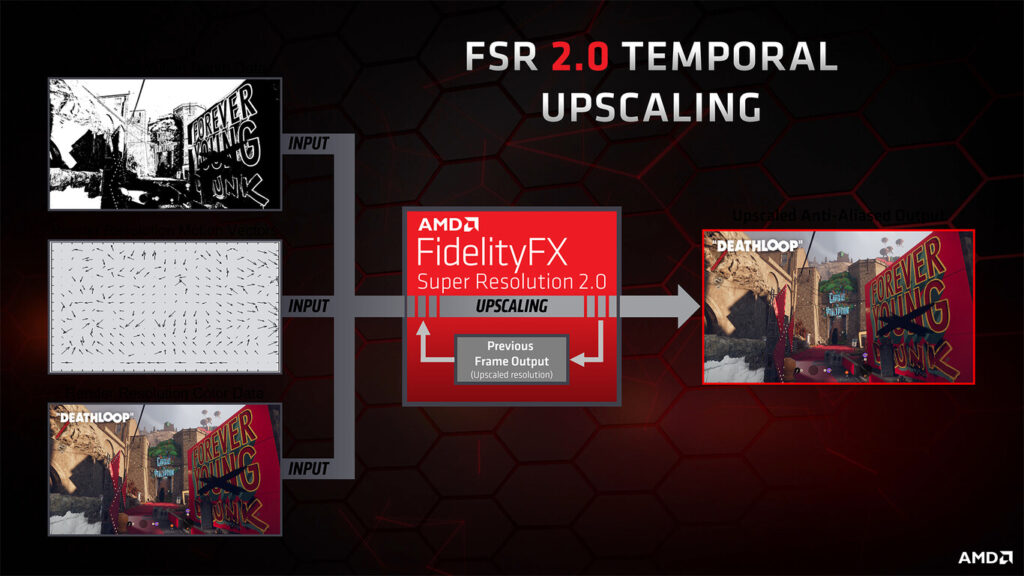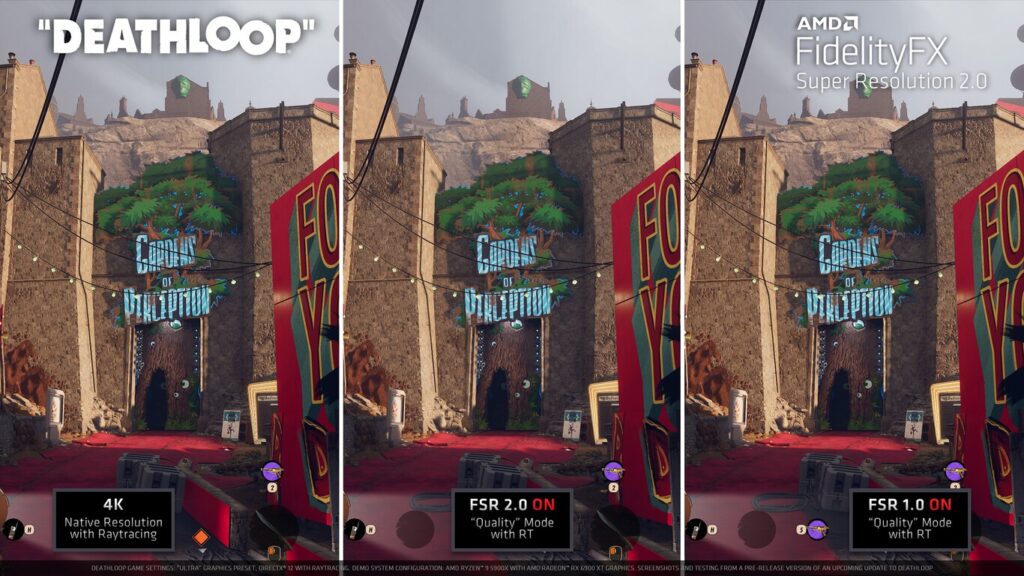Image reconstruction technologies are here to stay. The appetite of the gaming industry and enthusiasts for a combination of high resolutions, high-quality graphics, and a high frame rate per second is on the table. However, even the most advanced graphics hardware is often unable to cope with these three demands simultaneously.
The purpose of image reconstruction technologies such as NVIDIA’s DLSS (Deep Learning Super Sampling) or AMD’s FSR (FidelityFX Super Resolution), among others, is precisely to relieve the graphics hardware of some of the burden imposed by this usage scenario. The ultimate goal is to make high resolutions and the highest quality graphics compatible with a very high sustained frame rate per second.
However, although they aspire to achieve the same goal, the philosophy of the technologies proposed by NVIDIA and AMD is very different. Broadly speaking, while DLSS resorts to real-time analysis of the frames of our games using deep learning algorithms, FSR uses a spatial scaling procedure that does not require any prior learning, although it must be implemented specifically in games.
The image quality offered by the latest versions of NVIDIA’s technology is higher than that of AMD’s in the same usage scenario, but we should not overlook the fact that DLSS 2.0 represented a very important advance over the original version of this technology. And there is a chance that FSR 2.0, which has just been officially announced by AMD, will do the same.
FidelityFX Super Resolution 2.0 is committed to time scaling
AMD has changed its strategy. Instead of continuing to refine the spatial scaling used in the original version of FSR technology, it has opted to redesign its image reconstruction algorithm from scratch with the aim of “delivering image quality similar to, or even superior to, the native image, but drastically increasing the frame rate per second in those games that support it”.
That’s what AMD tells us, and while it looks good, we won’t know if FSR 2.0 lives up to the expectations it’s generating until we get a chance to try it out. In any case, this is not the only thing this company has unveiled today. It has also given us some interesting clues about the operation of what is currently its most advanced image reconstruction technology.

The temporal scaling procedure implemented in FSR 2.0 analyzes the color of each frame, the depth and motion vectors handled by the logic elements involved in the rendering pipeline, as well as the descriptive information of the previous frames, to create a new image that, in theory, manages to recover a very high level of detail. And, at the same time, it minimizes the jagged edges of the objects displayed on the screen.
AMD claims that FSR 2.0 offers a significantly higher image quality than the spatial scaling used by FSR 1.0. This may well be the case, but again it is important to remember that it is not reasonable to take anything for granted until we can analyze this technology. In the following composition, we can see an image quality comparison made by AMD that aims to show us the difference in quality between the image at native resolution, FSR 1.0 and FSR 2.0. It will be very interesting to face this last revision to NVIDIA’s DLSS 2.x technology.

Like FSR 1.0, the new version of this technology is an open-source solution, so a priori it can be used by other hardware manufacturers. AMD has confirmed that FSR 2.0 will be available in the second quarter of this year, so we may not have to wait long to test it. Let’s keep our fingers crossed that this will be the case. One last note: ‘Deathloop’ will be one of the first games to implement it.
This post may contain affiliate links, which means that I may receive a commission if you make a purchase using these links. As an Amazon Associate, I earn from qualifying purchases.

